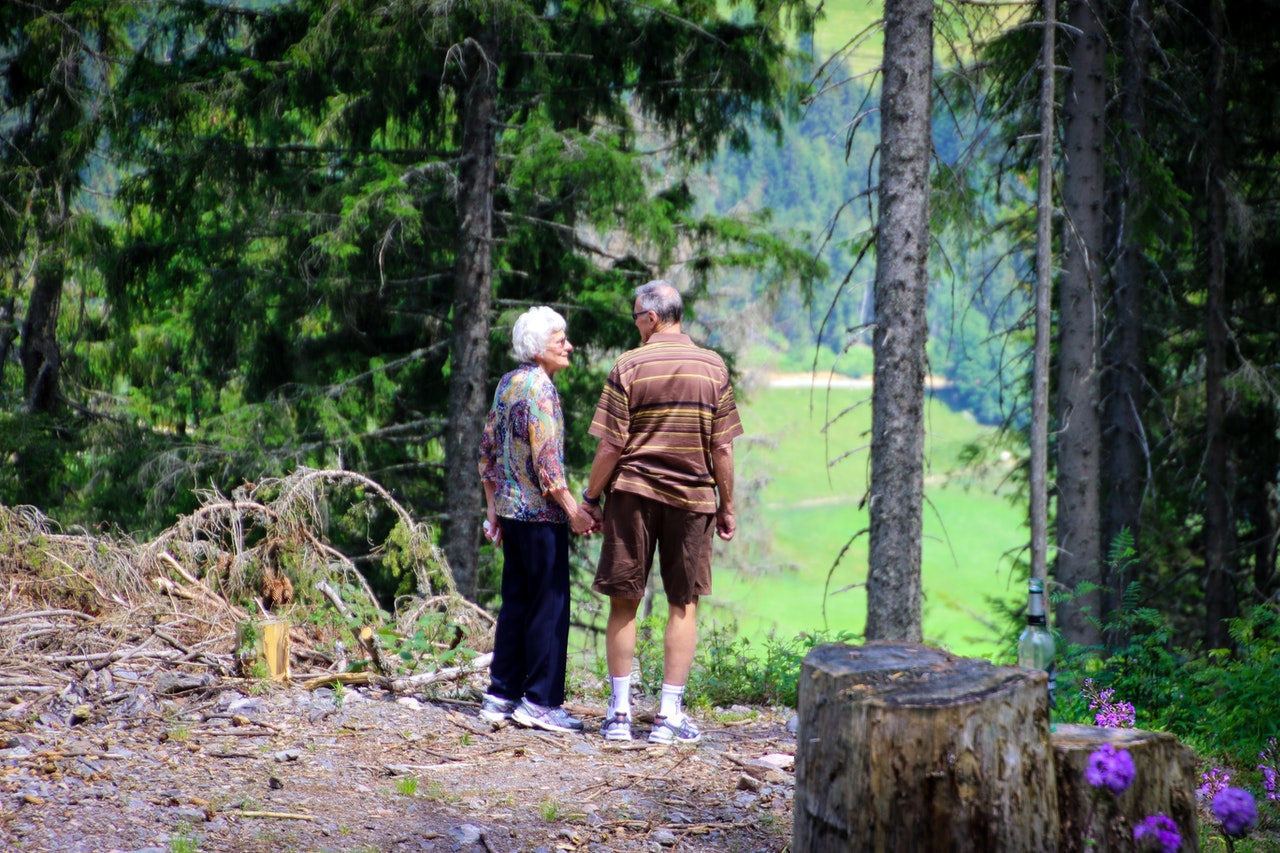Find out more about The Open University's Health and Wellbeing courses
Accessing face-to-face counselling can be difficult.However, many people have been found a different kind of therapy very valuable: Walking Therapy. You may also like to listen to our podcast here.
Two things come to mind when we think of walking and outdoors: both are immensely beneficial for our physical and mental health and wellbeing. Both are also immensely beneficial for people who have a neurodegenerative condition such as a type of dementia. You can read more about the ageing brain here. Walking is a type of exercise suitable and beneficial for everyone, and being outdoors just increases its benefits. Walking as a type of exercise is fantastic for us as we can all pace it according to how we feel at the moment when we are walking; we can start slow and speed up, or start fast and slow down. We are in control of what intensity we choose and this way we can make sure we don’t overdo it.

Walking is a type of exercise, so our muscles are working and as our blood circulates regularly it also speeds up our basic metabolic rate. This means that all organs will be working at a more optimal level compared to when we are sedentary. Walking, as other types of exercising, prompts us to breathe regularly which means that we are increasing the overall blood oxygen levels, that supports our brain and other organs to perform at an optimal level too.
Sometimes we might be feeling a little low and thinking: ‘… why should I bother going anywhere today…?’. But if we take our coat and get outdoors (even thinking ok… just 5 minutes), then we have already made a huge step. When we get out a few minutes can easily become 10 or 15 and help us to feel refreshed when we come back home. We may even notice our mood improved and we feel better. We also discuss more reasons why exercising is great to improve our mood here.
We know that green/blue outdoor spaces have great potential to support both physical and mental recovery and healing, and this is typically why rehabilitation hospitals were often built in the countryside. Studies show that green spaces promote mental wellbeing and increase quality of life for people with mental health needs. The recommendation is that everyone completes a minimum of 120 minutes a week out in nature to maximise their wellbeing. You can read more here.
There are a broad range of mental health interventions that can take place in nature including mindfulness and yoga, all the way through to wilderness therapy and more extreme sports. An area that has been of particular interest since COVID-19 is providing traditional talking therapy outdoors. This combines the benefits of conventional indoor therapy with benefits of connecting with the natural world and gentle exercise such as lowering blood pressure.
There are many benefits to this way of working. These include less of a sense of formality including not needing to make eye contact, increased access for people who would not engage in traditional services, less anxiety for people who find formal settings intimidating and a more human experience with a greater sense of freedom. Outdoor therapy can be beneficial for people who struggle to access technology, do not have a private space at home or struggle with communicating due to a physical or psychological condition. Outdoor therapy brings a different angle. You can draw on the experiences of being in nature to complement the therapy process, such as using the changing weather to mirror experiences of changing times such as grieving or recovery or using sensory aspects to develop skills in breathing exercises and mindfulness. To support people through difficult times we often use the metaphor that we are the sky and our emotions are the weather; the weather changes constantly but we remain throughout, and being outdoors really brings these messages home.
Now there are obviously considerations about the appropriateness of outdoor therapy and the British Psychological Society have published guidance on this. People must feel comfortable in the chosen space, the intensity of exercise must be planned and agreed, there have to be considerations about the terrain, mobility and any bad weather, and there will need to be a plan to maintain confidentiality and agree what should happen if someone becomes upset.

Outdoor therapy is not provided as standard on the NHS but there are discussions within services about how to make this more commonplace. If people are interested in completing this with a therapist in private practice then I would always recommend finding a therapist through the usual route (HCPC, BABCP, BACP registers) to ensure they are properly qualified and then once you have found a qualified professional exploring if they offer an outdoor option.
For anyone interested in the research further we recommend following the link to a review of studies on this topic by Dr Sam Cooley (2020) who identified 38 articles on talking therapy in nature-based settings. Our team are also contributing to this literature by reviewing the available outdoor therapy interventions for older adults who have experienced traumatic events and we hope to be able to provide an update on this exciting area soon.
And what about doing walking therapy in our everyday lives? Well whilst it’s recommended that you seek professional support for serious mental health difficulties, you don’t have to be seeing a therapist to access the simple benefits of walking and talking. This can be very beneficial with a friend or family member. Why not meet up with a friend, family member or colleague for a walk outdoors and try out your own walking and talking?
You don’t have to live in the middle of nowhere to access the benefits of green spaces; towns and cities have plenty of parks and gardens where you could do your own walking therapy. Parks can offer a huge variety of landscapes and wildlife which can help distract even the busiest of minds. Many local authorities offer health walks and you ma even have a local Green Gym where you can do outdoor volunteering with local people.





Rate and Review
Rate this article
Review this article
Log into OpenLearn to leave reviews and join in the conversation.
Article reviews